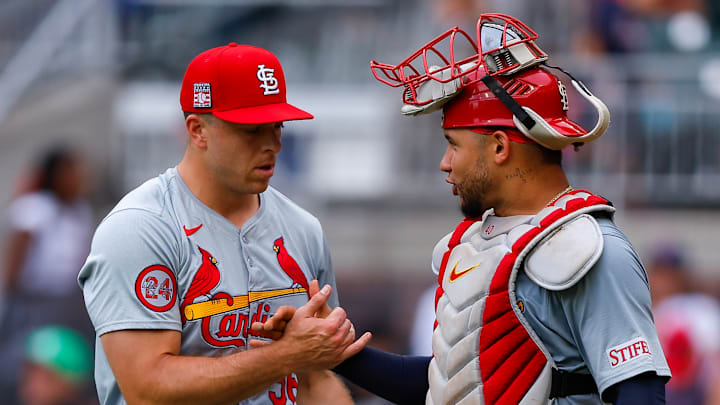#4 - Erick Fedde
The Cardinals' big trade deadline acquisition this year, Erick Fedde was supposed to be as much about the 2025 club as he was an upgrade for their 2024 rotation. Now he may be one of their best assets to reload their farm system this offseason.
While Fedde wasn't as sharp with the Cardinals, he did finish the year with a 3.30 ERA and 3.86 FIP over 177.1 innings of work. With below-average strikeout stuff, Fedde won't wow anyone on the mound, but he has shown the ability to get outs at a high level in 2024 and should be an attractive rotation upgrade for someone this offseason.
Fedde is set to make just $7.5 million in 2025, a huge bargain for someone who just pitched like a number three starter this year. FanGraphs has this stat called "Dollars" where they calculate a player's performance during a season and equate it to how much they'd be worth on the open market for one year, and Fedde's value in 2024 came out to $27.5 million.
Obviously Fedde wouldn't get that in free agency for one year, but he sure would get a lot more than $7.5 million if he were a free agent this offseason. Fedde reinvented himself during his stint in the KBO and is now someone that contending rotations would love to have as an option - hence why national outlets thought the Cardinals got a steal in Fedde when they gave up Tommy Edman.
So what exactly could a Fedde deal fetch the Cardinals this offseason? Well, there's actually a really good comp from right before the 2022 season that should give us a glimpse at what the Cardinals could expect when shopping Fedde this offseason.
On March 12th, 2022, the Oakland Athletics sent Chris Bassitt to the New York Mets in exchange for pitching prospects J.T. Ginn and Adam Oller. Bassitt was set to make $8.8 million in his final year of arbitration and was coming off a 157.1-inning season where he posted a 3.15 ERA and 3.34 FIP. Bassitt had slightly better strikeout stuff than Fedde but most other metrics measured out closely, making this about as similar as you could get to the situation that Fedde is in.
Per that same "dollars" stat from FanGraphs, Bassitt's 2021 campaign was worth $26.4 million just a hair below Fedde's value in 2024. Oakland was able to net Ginn in return, who was the Mets' fifth-ranked prospect by MLB Pipeline and sixth by Baseball America. Ginn was near MLB-ready at that point as well, which adds to his value. Oller was more of a throw-in prospect in that deal.
Not a flashy return by any means, but that's helpful value when revamping your farm system and looking toward the future. Sure, the Cardinals could hold onto Fedde and hope to slap him with a qualifying offer the next offseason, extend him, or deal him at the deadline, but it would make way more sense to sell high now and get what you can for him.
